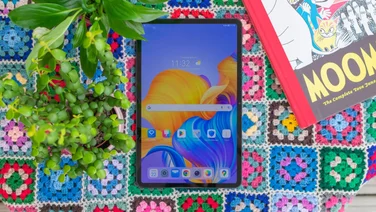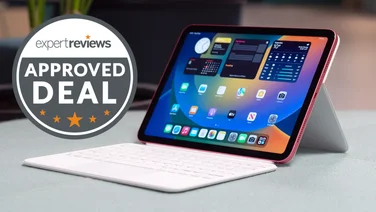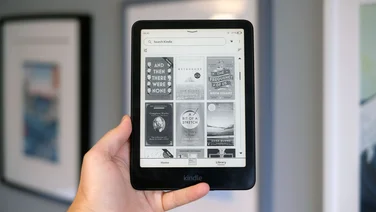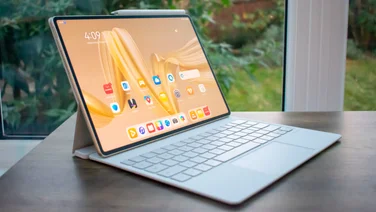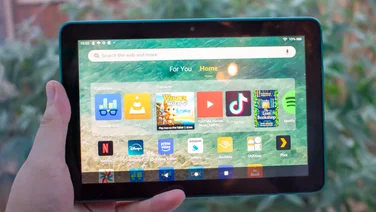To help us provide you with free impartial advice, we may earn a commission if you buy through links on our site. Learn more




The Motorola Xoom was among the first android tablets to launch using the tablet-specific Honeycomb 3.0 operating system. It was supposed to bring Android into direct competition with the Apple iPad 2, but based on the sales of such tablets, that certainly isn’t the case to date. The new Xoom 2 refines the original hardware, with numerous improvements, while the installed Honeycomb 3.2 does the same for the operating system. Despite this, the Motorola Xoom 2 is released into a fast-moving market, and could look out of date before it’s even found its feet.

The hardware is undeniably impressive to behold and handle. It’s far slimmer and lighter than the original, and it shares a number of design traits in common with its smartphone sibling – the Motorola RAZR. Its tapered corners look stylish and make it more pleasant to hold, in addition there’s a rubberised edge running around the back of the Xoom 2 to give you a better grip. Should you drop it, the screen is covered by toughened Gorilla Glass and the whole tablet has a liquid-resistant coating which deals with splashes like water off a ducks back – as an inadvertent test with lager and the RAZR proved this to us. It feels very sturdy and well-built, again much like the RAZR.
The styling may appeal, but it’s certainly not minimal, with a two-tone rear panel and numerous slots and ports. On the bottom (in landscape orientation) are micro USB and micro HDMI ports. A mains charger is provided for the former with a neat little plug-adaptor, so it’s not too much of a pain to carry about. The HDMI output can be used for playing movies or games on your HD TV. Alongside this is a flap covering what could be SIM and micro SD slots, however both of these are blocked in. Motorola has held off announcing a 3G version, though we’re hoping it does as tablet SIM prices have plummeted to as low as £5 a month. The lack of a micro SD slot is a more serious disappointment, as you can’t add more storage if you need it.

On the upper left-hand side of the back are the usual power button and volume rocker – they’re neatly recessed and sit just to hand in landscape, but are near-impossible to find when holding the tablet in portrait. Also on the rear is a 5-megapixel camera that can shoot HD video. The quality of stills is on par with most tablet cameras we’ve seen: a little noisy, a little blurry and a little disappointing. The video’s a tad better, but it’s still workmanlike compared to the best smartphones.
The IPS-technology screen is far more impressive, being among the brightest we’ve seen, with vibrant colours and good viewing angles. Motorola debuts its Intelligent Grip Suppression technology here, so you can leave a finger or thumb on the screen for added grip, and the touchscreen will ignore it so you can carry on making gestures with other digits. Unfortunately, this only works intermittently, so the home screens were fine to navigate, but the camera wouldn’t shoot until we removed our thumb from the screen.
Other software additions include an app for controlling the built-in IR emitter, so you can set the Xoom 2 up to control all your AV devices. It worked well, and the app lets you create customise groups of controls for multiple devices, so everything you need is to hand on one screen. You can even set up different profiles for different rooms. There’s also the easy to use MotoCast software, which you can install on any PC and then easily stream music, photos and videos to your tablet, or download them for playing later.
The original Xoom used an Nvidia Tegra 2 chipset, while the new model is built around a Texas instruments OMAP4430 – though in practice there’s little difference except that the OMAP4430 looks to be a little quicker in 3D. The processor speed is a fast 1.2GHz, rather than the 1GHz on most Tegra 2 tablets; thanks to that and the latest version of Honeycomb, rendering in the browser was very speedy – with a score of just 1,864ms in the SunSpider benchmark. Apps launched quickly and games ran smoothly, but as always Honeycomb is less than silky-smooth to navigate.

Battery life was pretty typical for an Android tablet. It lasted for eight hours and 16 minutes in our continuous video playback test, which puts it on a par with similar devices.
The Xoom 2 is a great Android tablet by current standards, but we can’t help but feel that better things are just around the corner. At present, it compares well to the Samsung Galaxy Tab 10.1, being ever so slightly smaller and equally thin and light. The key point here, however, is that the Tab 10.1 was launched back in the summer, and the Xoom 2 seems to have made little headway in the intervening months. With the quad-core Asus Transformer Prime announced, it could soon be technically surpassed.
Another reason it feels a little dated on release is that we now have the Android 4.0-powered Samsung Galaxy Nexus on test. The Xoom 2 will be receiving an update to that version of the operating system, but there’s no date on that yet from Motorola. All that said, the Xoom 2 is the best Android tablet you can buy today, but most potential buyers should wait for the Android 4.0 update to come along and then see what else is available come the time.


